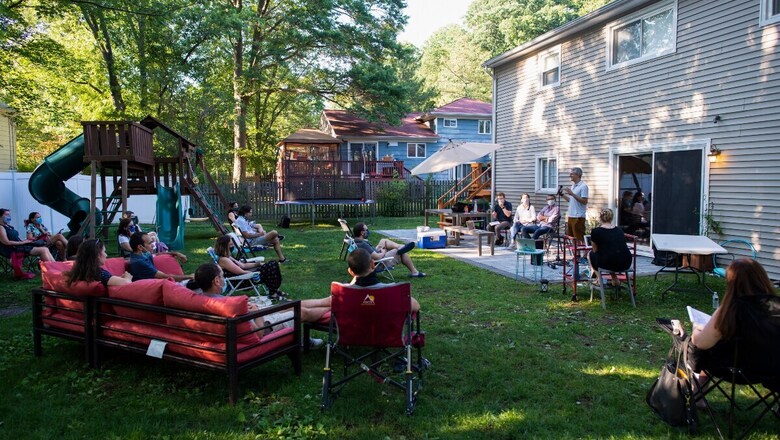
views
One Sunday afternoon in July, around a dozen parents gathered in a backyard in Hastings-on-Hudson, New York, a village about a half-hour north of midtown Manhattan. Another dozen joined them via Zoom. Folding chairs had been placed at prudent distances, and masks were dutifully worn. An Australian Labradoodle belonging to the home’s owners strutted among the guests.
Despite the breezy suburban tableau, the occasion was fraught. Over the preceding months, the adults in the backyard had grown increasingly concerned about the coming school year, which, it had become clear, might put students in class, at best, only part time. Parents were determined to avoid having their children sit alone for hours each day, withering in the gray light of a Chromebook.
A young woman named Cate Han, one of the founders of the Hudson Lab School, in Hastings, along with partners from Portfolio School, in Tribeca, were in the yard to pitch a solution: Learning Pods. “We looked at the situation and asked, ‘What makes sense?’” Han said. “A social bubble, consistent schooling, and have it be with a teacher in person.”
Babur Habib, a Portfolio founder, took a more visionary tone. “Yes, we are in a pandemic,” he said. “But when it comes to education, we also feel some good may even come out of this.”
One thing was certain. It was going to be very expensive — maybe prohibitively so — but these parents wanted a solution. Many had chosen to live in Hastings because of its outstanding public schools. Now they were considering withdrawing their children and embracing a novel teaching model that could have implications for public education for years.
There might be no more potent symbol of inequality during the pandemic than the pod school: A single semester in a Hudson Lab pod can cost more than $13,000.
This fall, a majority of 50 million American children enrolled in public school are almost certainly going to be confined within their homes for part or all of the school day. The numerous harms of being kept out of school — academic, social, emotional, psychological, physical — are felt by all children, but a disproportionate weight will be borne by those with the least resources. The wealthiest children will be ensconced in private schools and catered to by tutors and nannies. For most, there are few options.
But for a slice of enterprising American parents with resources, so-called pod schools have arrived. Cropping up all over, these small educational groups aim to offset the looming wreckage of a national experiment in distance learning. Among the many options are School House, based in New York City, which is offering “micro schools” around the country, and Whiz Kidz, based in nearby Irvington.
The idea of learning pods, both formally organized by outfits like the Hudson Lab, as well as more ad hoc parent-run variations, appears to be speaking to parents who feel that government agencies and school districts have failed to plan for their children.
The program presented by Han and her colleagues that afternoon sounded relatively simple.
Parents will form groups of three to 10 children, usually in the same grade. The “pods” will meet each day from around 9 a.m. to 2 p.m. in a host parent’s basement or cordoned-off living room or perhaps somewhere outdoors, to learn from a teacher provided by the Hudson Lab.
Each pod for grades K-4 will cost $125,000 for the academic year, or $68,750 for a five-month commitment. With five children in a pod, for example, the cost per student will run $13,750 per semester. The more children in the pod, the lower the cost per student. There is different pricing and reduced hours for preschool pods. (Both HLS and School House are seeking partnerships with foundations so they can offer scholarships.)
“My children didn’t get an education this spring,” said Ronit Sukenick, who offered her backyard for the Hudson Lab presentation. She has two boys, Jonah and David, who experienced the last three months of second and sixth grade at their dining table.
“None of the things that were great about my sons’ schools translated to remote learning,” she said. “No science experiments or a teacher at their sides. No interaction with friends.”
The loss of both the academic and social aspects of school was a refrain from more than a dozen parents I spoke with regarding distance learning.
Han appealed to the palpable anxiety among the parents in the yard. “We are social beings,” she said as a few parents nodded in agreement. “Our identities are formed based on our interactions with others.” Learning for children is tied to being with peers, she said.
Why should a child suffer in isolation, struggling to learn how to read through a computer, when they could thrive with a small group of peers and a real teacher instead?
To enroll full time in the Hudson Lab learning pods, parents withdraw their children from public school and register as home-schoolers, a process that requires parents to submit academic plans to their district for approval. Hudson Lab also offers an option that allows students to remain enrolled in school remotely while using a learning pod as a supplement.
Pod families also need to draw up agreements on the various facets of distancing behavior each child and family will be obligated to. Is it OK if someone gets a haircut in the city? What about play dates outside the pod?
Aside from safety concerns, other issues will surely arise — different learning styles, teacher and parent goals. It all needs to be worked out. But as part of its fee, the Hudson Lab School will help with the paperwork, mediate parent interaction with the teacher, and align pod curriculums to state standards.
Pod programs offer an inoculation against the possibility that public schools might close. As long as the community isn’t in complete lockdown, the learning pods can keep going.
Lauren Lazarin is a single mother in Riverdale, in the Bronx, with a limited income, but she’s considering signing up for a Hudson Lab pod. “If I have to ditch my salaried job as an early childhood educator and work as a private tutor so my 5-year-old daughter can get her education and I can keep my family safe,” she said, “then I might have to make that choice.”
For Sukenick, who works as a physical therapist, the choice is stark. She can either quit working while she looks after her sons when they’re home, or she can keep her very fulfilling job and deplete her savings to pay for the pods. “This is our emergency fund,” she said, noting they were thankful to have it. “And this is our emergency.”
Erica Paris, a stay-at-home mom in Towaco, New Jersey, recently received her daughters’ fall schedule from the school district. Her 8-year-old, Alexa, will attend elementary school four half-days per week; Emma, 12, will attend middle school just two half-days per week. Paris said she will have to hire someone to help with remote learning during their copious time out of school. “I respect educators. I don’t know how to take the curriculum and do it myself,” she said. “I can’t be both a teacher and a parent.”
She has reached out to other parents “to see if their girls want to do a small group and share a tutor.” For Paris, the sharing of a tutor is less about saving money than for the advantage of her girls being in a group setting. Her daughters’ schedules are also baffling and frustrating.
“The reason they have half-days is because the teachers’ contract guarantees a duty-free lunch, which is understandable,” she said. “But couldn’t we figure out how to hire aides for an hour? Two half-days of school a week is ridiculous.”
I’ve been similarly disheartened over the pending school policies in Hastings. I was in the Sukenicks’ backyard that afternoon because remote learning this spring for my children, ages 9 and 11, had been an abysmal affair.
My younger son would blast through the days’ assignments, often consisting of watching videos and checking boxes. By 9:30 each morning he’d confront me, panicked: “I’m done. Now what do I do?” My daughter was saddled with extensive projects and a detailed course load she often needed help with.
Mainly it was a profoundly lonely time for them. The neighborhood kids shut off from one another, hours were spent alone in their rooms, dissolving into electronic screens.
And I’m aware my children are more fortunate than many others.
The many parents I’ve spoken with for this article have expressed sadness and unease over the inequities that a remote-learning model engenders. Yet allowing their children to suffer is not the remedy to a systemic problem.
As a journalist I began scouring the research on children and COVID-19 when our schools shut down some five months ago. I haven’t climbed out of the data pit since.
The preponderance of evidence suggests that children, by and large, are spared dangerous effects of the virus.
Data from Sweden, where lower schools have been open for the entirety of the pandemic, without specific distancing mandates or children in masks, show that teachers were at no greater risk than other professionals.
Philosophically, I believe schools should be among the last institutions to close and the very first to open. Many experts have argued similarly, including in The New York Times. But I am aware plenty of people feel differently.
What I can say here, though, is what I know to be true for my family. After months of solitude, where screen time essentially became time itself, my kids have finally escaped. They’ve been in camp for the past few weeks, playing and interacting with other children all day. The transformation has been akin to a time-lapse video of the reanimation of a long dormant creature. They finally seem like themselves again. I want my children, and all children, to have the opportunity to be with their peers, every day, in person.
That afternoon at the Sukenicks’ I quickly realized that the Hudson Lab pod program is well beyond my family’s financial means. I don’t know what exactly we’re going to do when school starts.
In my district, there has been an interesting overlap between the send-them-back-to-schoolers and the keep-them-homers, in that most are seeking any alternative they can think of to their children sitting alone at a computer each day. A movement for outdoor classes seemed to bring many from opposing sides together. Yet despite the enthusiasm of parents, the likelihood of that coming to fruition seems dim. American can-do spirit somehow seems absent from getting kids in school, even — or especially — if school is outdoors.
Several weeks after the backyard presentation, Han told me that Hudson Lab has not finalized any pods yet but has around 60 applications. Many families are waiting to hear what the state and local guidelines will be before making a decision.
Sukenick has not yet decided on plans for her boys. Whatever it is, she hopes it will include an in-person experience every day.
Lazarin, the single mother in Riverdale, isn’t only worried about remote learning. She’s also worried about the in-school environment, with “these unnatural experiences of eating lunch in cubicles, recess alone in a square on the pavement.”
After pausing for a moment, thinking about the pod, she said, “If I have to sell my arm to make that happen, then I’ll do it.”
David Zweig c.2020 The New York Times Company










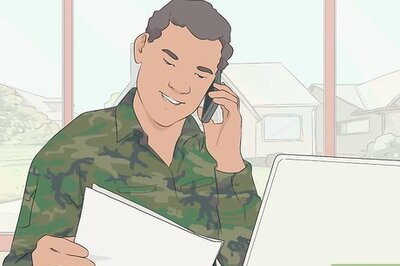

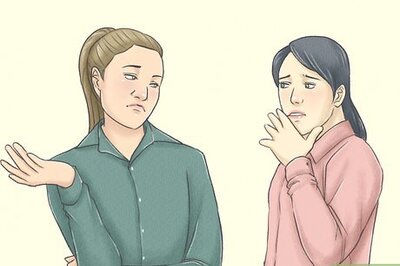
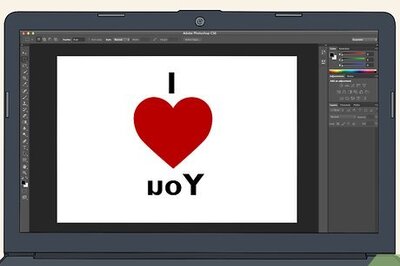



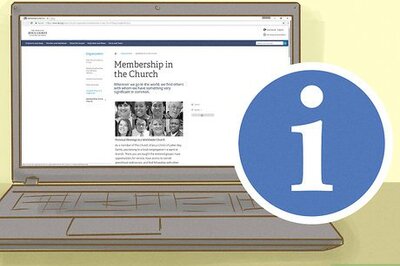

Comments
0 comment